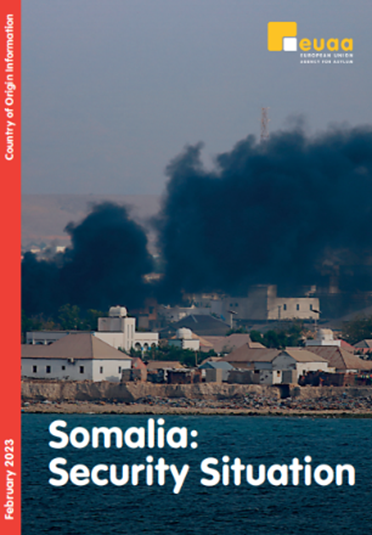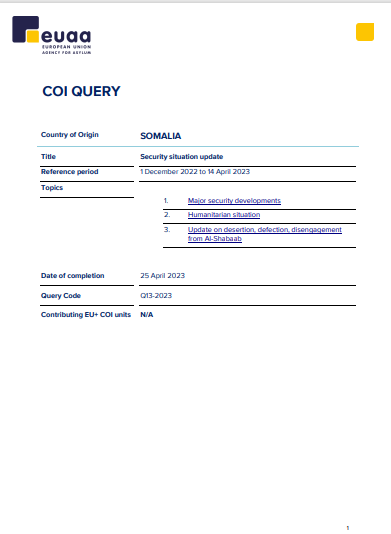INTRODUCTION
Last update: August 2023
The country guidance documents provide country-specific common analysis and guidance in relation to the assessment criteria established in the recast Qualification Directive (Directive 2011/95/EU) 1. They are developed by the EUAA together with a network of senior-level policy officials from EU+ countries and represent their joint assessment of the situation in main countries of origin, in accordance with current EU legislation and jurisprudence of the Court of Justice of the European Union (CJEU).
The aim of the country guidance documents is to assist decision-makers and policy-makers in their daily work and to foster convergence in the assessment of applications for international protection and the type of protection granted in the context of the common European asylum system.
The development, review and update of country guidance is regulated under Article 11 of the EUAA Regulation. 2
In accordance with Article 11(3) EUAA Regulation, Member States have the obligation to take into account the common analysis and guidance notes when examining applications for international protection, without prejudice to their competence to decide on individual applications.
This common analysis is based on country of origin information (COI) with a clearly indicated reference period. Each section of the country guidance documents also clearly states the timing of its last update.
The analysis and guidance within this document should be considered valid as long as current events and developments in the country fall within the trends and patterns described within the COI on which the assessment at hand is based on.
The analysis and guidance provided within this document are not exhaustive.
Common analysis, guidance note and methodological approach
The country guidance document consists of two important components: the guidance note and the common analysis. These two parts focus on the situation in the country of origin and provide analysis and guidance on the assessment of relevant international protection needs. They should be read in conjunction with the separate document ‘Country Guidance: explained’.
‘Country Guidance: explained’:
This document outlines the general guidance relied upon in this analysis, as well as the methodological framework, approach and indicators used to assess the different elements of qualification for international protection.
Scope of this update
The current version of the guidance updates and replaces the ‘Country Guidance: Somalia’ of June 2022.
This update mainly focuses on refugee status considerations in relation to desertion or defection from Al-Shabaab (see the sub-profile Deserters and defectors from Al-Shabaab) or otherwise disengaging from the group (see Women and girls who have left Al-Shabaab) and provides an updated assessment of the security situation in the country, in particular with regard to subsidiary protection needs under Article 15(c) QD (see the section Article 15(c) QD: indiscriminate violence in situations of armed conflict). Where relevant, other sections of the present guidance have also been updated based on available COI.
This update is mainly based on the following recent COI:




EUAA COI report:
'Somalia: Security situation'
(February 2023)
EUAA COI report:
'Somalia - Defection, desertion and disengagement from Al-Shabaab'
(February 2023)
EUAA COI Query:
'Somalia: Security situation update'
(17 May 2023)
EUAA COI Query:
'Somalia: Forms and prevalence of repeated FGM/C'
(17 May 2023)
Annex II. Country of origin information references provides further details on all COI reports used as a basis for the analysis within this document. References and links within this document are to the respective sections of these COI reports.
To access EUAA COI reports, visit https://euaa.europa.eu/country-reports.
- 1Directive 2011/95/EU of the European Parliament and of the Council of 13 December 2011 on standards for the qualification of third-country nationals or stateless persons as beneficiaries of international protection, for a uniform status for refugees or for persons eligible for subsidiary protection, and for the content of the protection granted.
- 2Regulation (EU) 2021/2303 of the European Parliament and of the Council of 15 December 2021 on the European Union Agency for Asylum and repealing Regulation (EU) No 439/2010.
